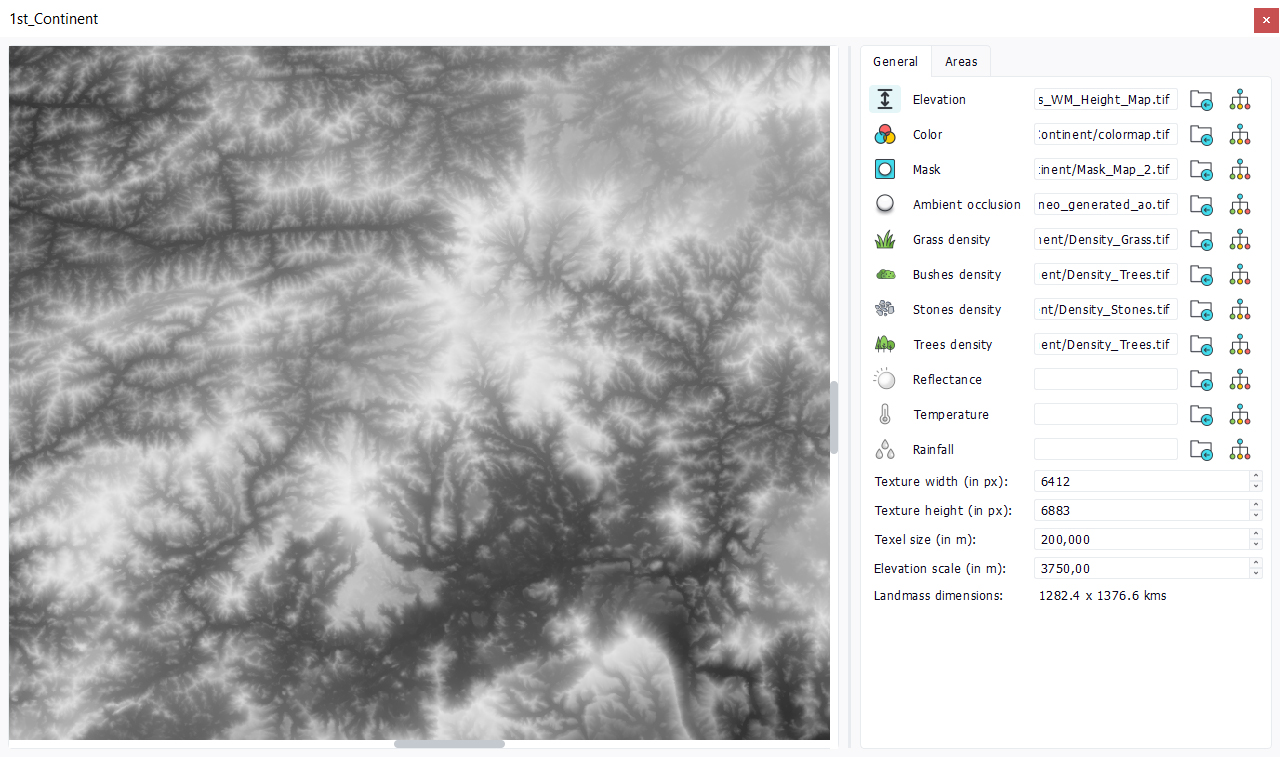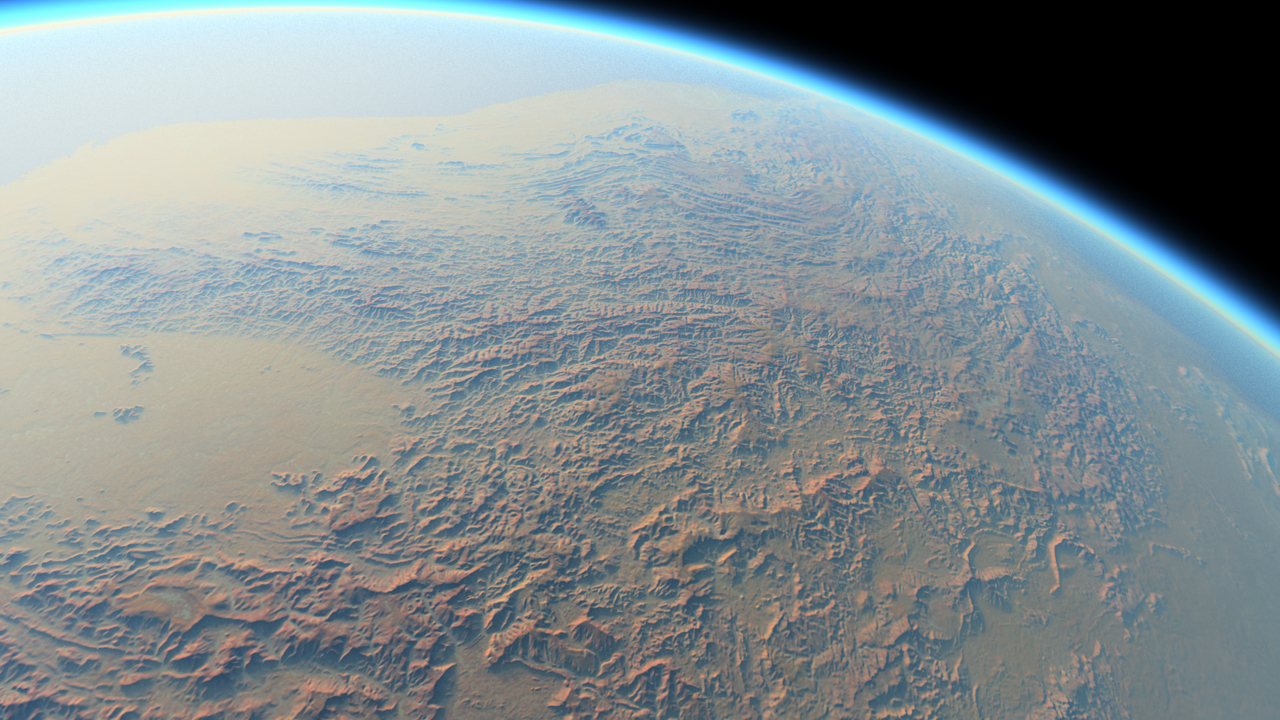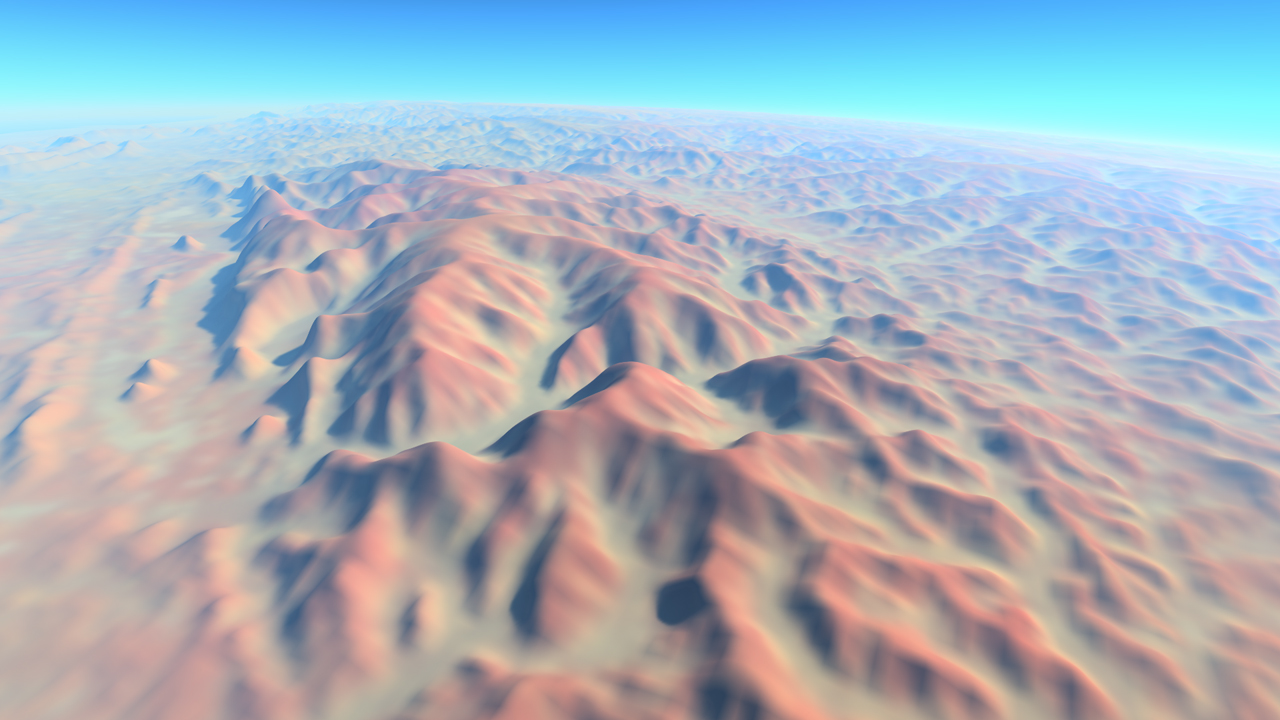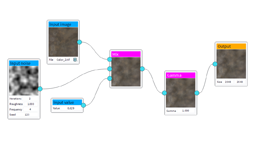Landmasses
Landmasses are continental pieces in NDunes. They are very large scale terrains used to assemble a planet's global layout at another level than what can be achieved with regular Soils and Terrains.
In order to assemble a complete world, millions of terrains have to be instanced in a specific way that preserve a global natually looking layout. This global natural layout is made of vast mountain chains, valleys, geological formations that result of a very complex evolution process very difficult to mimic in a procedural way. So NDunes does not use any procedural approach to define the vast layout of a planetary assembly. It uses an artistic driven approach and one of the tools used to control that layout is landmasses.
Understanding what landmasses are and how to use them
At first, landmasses look like Soils:

We find a number of map channels similar to those found in Soils. We'll get back to this later. The landmass dimensions are huge here: it's 200 meters per texel so the landmass dimensions exceed 1000 kms. It's elevation is around 4 kms. As we can see zooming on the elevation map of the landmass, it has a lot of real details:

And, in fact, this is normal because this specific landmass has been sourced from satellite Digital Elevation Model files that can be freely accessed. From this satellite data, we can capture nature's global layout, so this is a convenient way to trap this level of knowledge in our planet layout. Note that any map can be used, so it could be engineered, made of procedural noises or hand painted or whatever else.
But the point is that this map HAS to capture the global layout that you wish to setup locally on your planet. Individual terrains won't be able to do that. Then it's texel size MUST be high enough to account for a global layout definition. We'll get back to this later in this chapter. For now let's focus on the fact that we have a piece of landscape which is 1200 x 1300 kms wide, 4 kms high, that we can place on the planet.
We'll then create an atlas (Atlases) which will store Landmasses, Terrains and Biomes together. To get to the big picture, we'll skip the detailed atlas setup and calculation process and jump to the results. In the picture below, we have dropped the landmass onto a small planet (2000 kms radius, so roughly one third the earth size):

The landmass is naked, meaning that we have no terrains over it. In our setup we have a 2000 kms radius planet, and an atlas map (see Atlases for details) which is 50000 texels wide, so a single atlas map texel at the equator is 2000 * 6.28 / 50000 = 251 m. This matches the size of our landmass texel which is good. As landmasses are used to calculate the atlas map, the detail level we have in them will be mostly preserved. Landmasses are the components that build the atlas map. The atlas map is the first level of our terrain architecture (Overview of the terrain architecture). Note that our shadow range has been set to 200 kms in the Settings for this image.
At this point we can see that by combining landmasses over a planet we can define a global planetary layout: as many landmasses as needed can be added to an atlas. Note that landmasses are only used to define the atlas map, so the number used and their size don't really matter once the atlas map has been calculated.
So at this point, we see the landmass for what it is: a large scale guideline. It has no detail below 250 meters and we can see that when zooming on it:

So for the next step, we'll need terrains. A lot of Terrains. These terrains are kind of "puzzle" pieces that'll be aggregated by NDunes to replace the relief of the the landmass and to complete it. For this we need a wide range of different terrains: mountains, hills, valleys, canyons, ...Below is the same continent, with an atlas that has been calculated with around 40 terrains:

From this we have the large scale picture and the extremely detailed picture too as we can get to the ground level and still benefit of our millimeter detailed landscape. We can go from the orbit down to the ground and vice-versa without any transition.

Creating landmasses |






